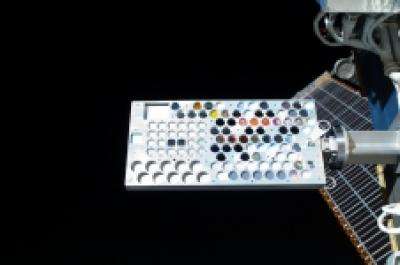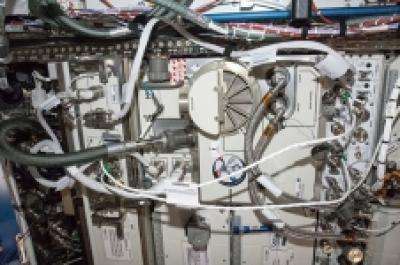Weekly recap from the International Space Station expedition lead scientist

The Expedition 36 crew completed packing the Materials International Space Station Experiment-8 (MISSE-8) Payload Experiment Container (PEC) and Optical Reflector Materials Experiment-III (ORMatE-III) after it was retrieved during the spacewalk. The MISSE-8 samples have been in orbit for a little over two years and the PEC and ORMatE are manifested for return to Earth on SpaceX 3.
MISSE-8 is test bed for materials and computing elements, attached to the outside of the International Space Station, that are being evaluated for the effects of atomic oxygen, ultraviolet direct sunlight, radiation and extremes of heat and cold. Results will help in the development of new materials for future spacecraft. The knowledge gained on solar UV reactions with various materials may help make plastic products such as siding for houses more durable. The new advanced materials and components being demonstrated in MISSE-8 will improve the performance, increase the useful life, and reduce the costs of future space operations of commercial weather, communication and Earth observation satellites that we all now depend on, as well as enhance solar cell technology.
The crew prepared the fourth sample for ground-commanded science operations for the Advanced Colloids Experiment-1 (ACE-1) study by mixing the sample well, dispensing oil on the sample and installing it into the Light Microscopy Module (LMM) of the Fluids Integrated Rack (FIR). The ground team monitored aggregation of the colloids solution for 72 hours. ACE-1 is a series of microscopic imaging investigations that uses the microgravity environment to examine flow characteristics, and the evolution and ordering effects within a group of colloidal materials. The ACE-1 samples provide important data that is not available on Earth; data that can guide our understanding of crystallization, production quality control and phase separation (e.g., shelf life and product collapse). Additionally, since product shelf life may be dependent upon binodal decomposition and possibly upon Ostwald ripening (coarsening) in the emulsion samples, a better understanding of these processes could have an enormous commercial impact in terms of quality, production and longevity.

The ground team performed four runs to complete 30 test points for the Amine Swingbed investigation. The study determines if a vacuum-regenerated amine system can effectively remove carbon dioxide from the space station atmosphere using a smaller, more efficient vacuum regeneration system. Although designed for human spaceflight missions where ample access to the vacuum of space is available, the technology can be used in Earth applications if access to a clean purge gas supply is available.
The ground team completed all of their 24 planned science runs for Expedition 35/36 for the Marangoni study. This experiment investigates Marangoni convection in microgravity, a process driven by the presence of a surface tension gradient produced by temperature differences occurring at a liquid/gas interface. This will help improve the efficiency of thermal devices. The knowledge from Marangoni space experiment is applicable to the high-performance heat exchanger and heat pipe in space and on Earth. Designing more efficient, lightweight radiators that remove unwanted heat from spacecraft is critical for long-duration space missions.
Other human research investigations continued for various crew members including Space Headaches, and Reaction Self Test.
Provided by NASA





















